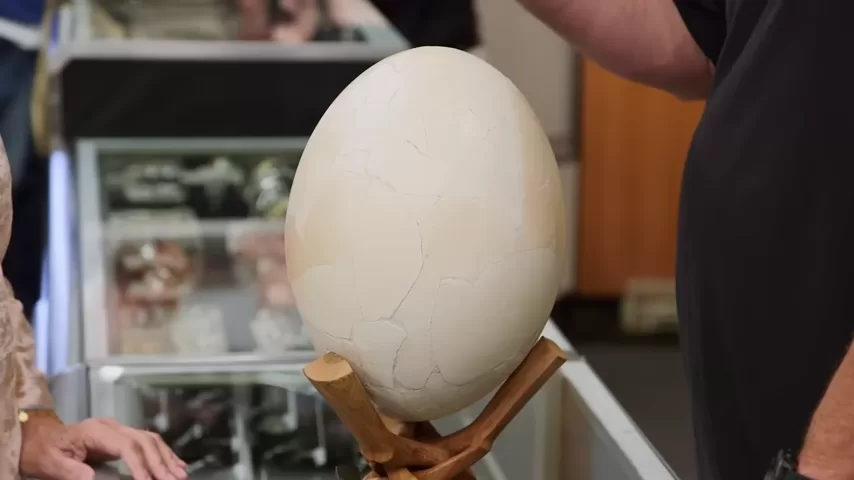In a world where fossils, meteorites, and ancient artifacts are fetching increasingly high prices, one peculiar item recently made headlines: an elephant bird egg. It wasn’t just its massive size that drew attention—it was the mystery, rarity, and surprising value behind it.
The owner walked into a pawn shop hoping to get $2,500 for what looked like a giant, pale, oddly pieced-together egg. It wasn’t the first time someone brought in something unusual, but this was no ordinary collector’s item. What he had in hand could very well be a genuine relic from a long-extinct giant that once ruled the island of Madagascar.
“Happy with it? You must own really large chickens,” the shop owner joked as the object was unveiled.
But this wasn’t poultry. It was paleontology.
What Is an Elephant Bird?
The elephant bird (Aepyornis) was a towering, flightless bird native to Madagascar, believed to have gone extinct by the 17th or 18th century. Resembling an enormous ostrich, it stood up to 10 feet tall and could weigh over 600 pounds. Though it was flightless, it dominated its environment—at least until human activity contributed to its disappearance.
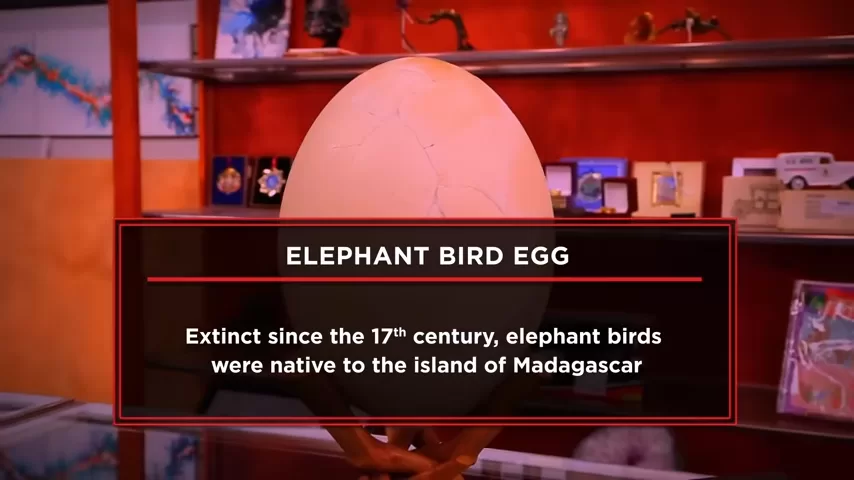
These birds laid some of the largest eggs known in the animal kingdom. One elephant bird egg could measure over a foot long, with a volume capable of holding up to 150 chicken eggs.
Naturally, intact specimens are exceedingly rare—and valuable.
Piecing the Past Together
This particular egg, the seller explained, was made up of authentic elephant bird eggshells—but not from one single egg. Instead, it was a composite, built by carefully assembling fragments from different eggs. That’s a common practice in fossil and artifact restoration when perfect specimens are too rare to come by.
“They dig these things up and piece them together,” the seller noted. “All these are little pieces, but all elephant bird eggshell.”
From a collector’s perspective, the quality of the reconstruction and authenticity of the material are both crucial to valuation. But even with known composites, demand has skyrocketed in recent years. Fossils, minerals, and natural history artifacts have become some of the most popular—and profitable—niches in collecting.
Enter the Expert: Is It Real?
To determine the egg’s authenticity and value, the shop called in a paleontologist.
“These are pretty rare,” the expert admitted upon seeing the piece. “They’re often faked too. Porcelain and ceramic fakes can fool the untrained eye. But if this is real, it’s definitely valuable.”
Using a hand lens, the paleontologist examined the surface texture—a key detail that separates authentic fossils from replicas.
“See those long grooves in the shell?” he pointed out. “That’s what we would expect to see from an elephant bird.”
After a careful inspection, he confirmed it: this was a genuine elephant bird egg, even though it was a composite. Still, there were condition issues. Some areas where the pieces didn’t align had been ground down to fit—something that’s frowned upon in high-end restoration, as it lowers the value.
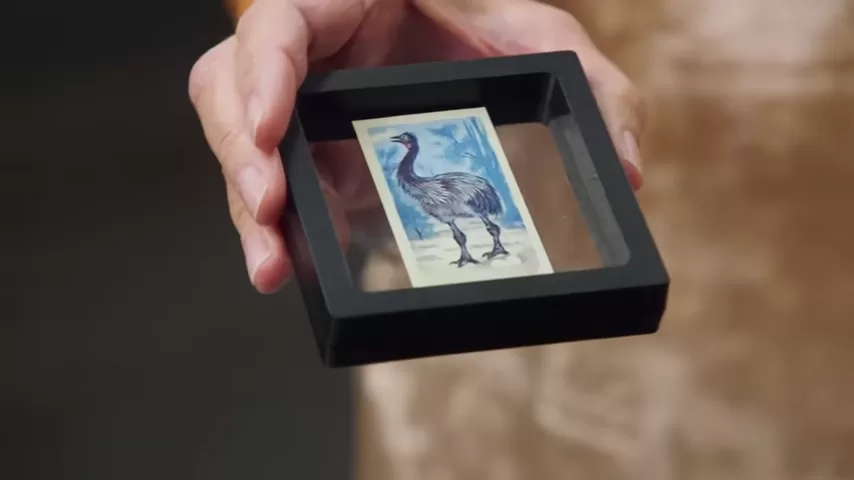
So, What’s It Worth?
Despite imperfections, the egg was still an authentic specimen, and that made it valuable.
The paleontologist appraised the item at $5,900, a number that stunned the seller.
“Is it worth an elephant-load of cash?” the shopkeeper joked. Apparently, yes.
Encouraged by the appraisal, the seller nudged his price up from $2,500 to $3,000. The shop offered $2,800—still above the original ask, and a generous offer given the niche market and condition concerns.
“I know that’s true,” the seller admitted. “But your paleontologist really got my hopes up.”
In the end, he accepted the $2,800 offer with a smile.
Why Are These Eggs So Valuable?
Beyond their size, elephant bird eggs represent the intersection of paleontology, extinction science, and natural wonder. Each egg tells a story about a lost world, and for collectors, it’s not just about owning a rare item—it’s about preserving history.
Authentic elephant bird eggs are typically found in Madagascar, where the climate has allowed some of them to be preserved in fossil beds and sand dunes. Most are discovered as broken fragments and carefully reconstructed. Full, undamaged specimens are almost unheard of.
Their rarity has driven up prices—especially in the last decade. From natural history museums to private collectors, demand is rising. Auctions have seen authentic eggs sell for upwards of $10,000, depending on quality and provenance.
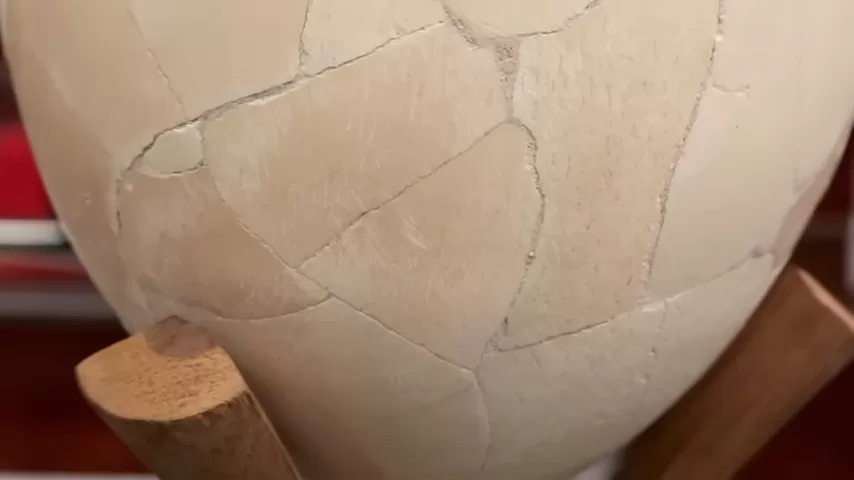
The Composite Dilemma
Composites—items made from multiple sources—are common in paleontology. But their value depends heavily on how well the reconstruction is done, how much original material is used, and whether the piece is clearly identified as a composite.
Buyers must also watch out for fakes made from plaster, ceramic, or modern materials. That’s why verification from an expert is essential. In this case, the paleontologist’s inspection and the presence of key natural textures were enough to confirm authenticity.
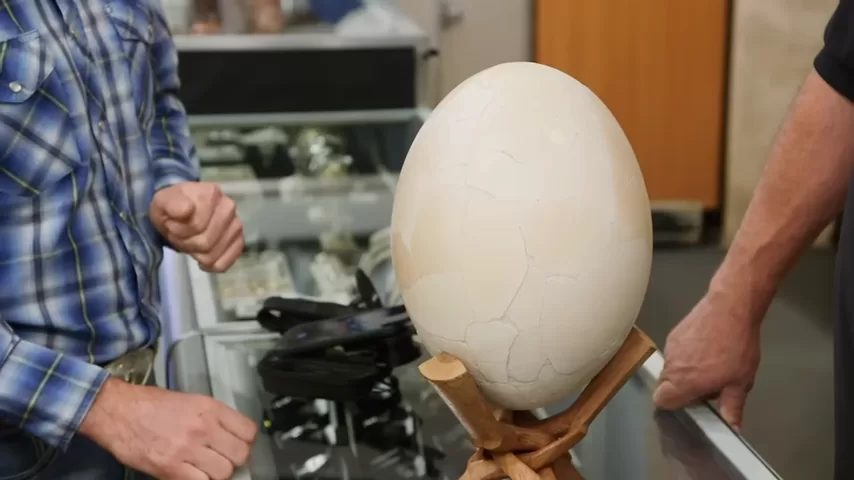
Final Thoughts: A Prehistoric Payoff
What began as a quirky curiosity ended with a four-figure payday. The seller left with more than he hoped for, and the shop acquired a conversation piece that might soon command even more value from the right buyer.
It’s a perfect example of how hidden treasures from the past can still find their way into modern hands—sometimes in the most unexpected ways.
If you ever stumble across something strange, oversized, or prehistoric-looking in a box at home, maybe think twice before tossing it out. You never know—you might be holding the last egg of a 600-pound bird.
